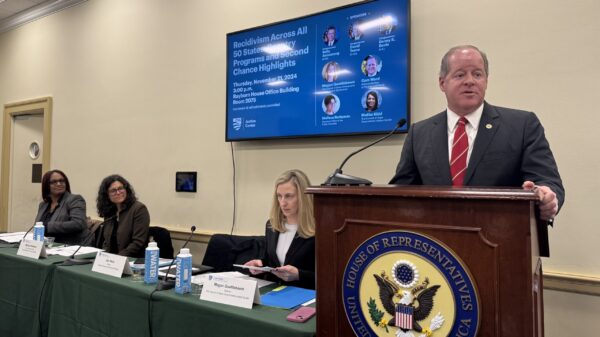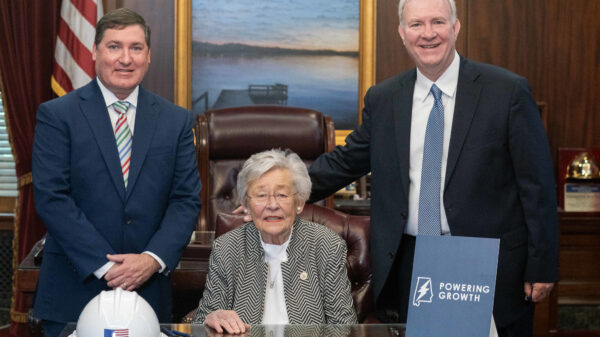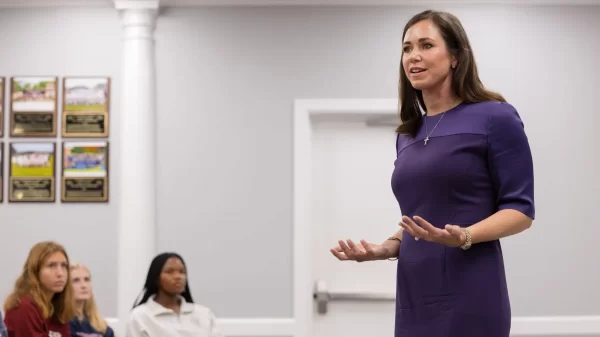The Legislature’s Joint Reapportionment Committee approved four draft redistricting maps Tuesday — all along party lines.
The draft maps show the new proposed districts for Congress, both chambers of the Legislature and the state school board.
Democrats questioned the process, stating they did not have time to digest the information before coming to a vote.
“Personally, I think this is doing a disservice to the process and also to the people that we represent that haven’t seen this map either, unless you’re following me on Twitter,” said state Rep. Chris England, D-Tuscaloosa. “There’s got to be a better way to do this. I think it’s flawed.”
Committee co-chair Sen. Jim McClendon, R-Springville, prefaced the meeting by telling members the committee was under a short turnaround.
“Federal law requires the Census Bureau to provide data no later than the March after the data is conducted,” McClendon said. “This time the Census Bureau was seriously late; instead of getting the data in February or March, we did not receive the data until Aug. 12.”
McClendon said that the committee leadership met with each person representing every district on all four maps, sometimes more than once, since receiving the data.
The map was drawn in-house without regard to racial demographics, McClendon said, with an emphasis on keeping counties whole, adhering to the Voting Rights Act and making the districts fit within the population deviation to keep the districts equal. McClendon said the racial makeup of the districts was then analyzed for any issues after the initial lines were drawn.
England asked how the congressional map complied with the Voting Rights Act and specifically asked whether the 7th Congressional District had a racial polarization study conducted.
McClendon said that because the 7th Congressional District had more than a 54 percent majority of Black citizens of voting age, committee attorney Dorman Walker concluded no study was necessary.
England disagreed that the study was unnecessary, and State Rep. Chris Pringle, R-Mobile, said a study will be done on the 7th Congressional District, as well as on Singleton’s proposed map.
Leadership also said that any districts which appeared to have a potential “racial issue” were analyzed.
Rep. Laura Hall, D-Huntsville, motioned to delay the vote on the maps until committee members have more time to review them and see the results of the racial polarization studies. McClendon moved to table the motion, calling it “inappropriate.”
State Sen. Bobby Singleton, D-Greensboro, joined England in stating concerns that Jefferson County was split between three congressional districts, while other counties were split by two or fewer.
“We saw and heard from the U.S. Supreme Court that District 7 was the most gerrymandered district in the state of Alabama,” Singleton said. “We believe based on the whole county we can get two majority districts out of this. The chairman has not tried to do that to stay with what we’re used to doing. He didn’t try to come up with anything else different. That’s what you get when you don’t get any input from anybody else. I will introduce a map next meeting. I think we can get two districts out of here for African Americans.”
State Sen. Rodger Smitherman, D-Birmingham, said he felt the process was moving too fast and was not considering the concerns raised.
“I think the process itself has not addressed compromise as it relates to minorities,” Smitherman said. “It kind of disappoints me; it says to me ‘I don’t give a heck what you think, take me to court.’ Past involvement says that has happened. We should work together in this situation to compromise with both sides.”
State Rep. Barbra Boyd, D-Anniston, added: “We know who has the votes, all we want is an opportunity to be heard fairly.”
State Rep. Sam Jones, D-Mobile, argued the committee “cannot disregard transparency based on urgency.
“To me, the questions that’s been asked are logical questions,” Jones said. “I think the attorney mentioned it to me, ‘well they’ve been doing it like this a long time.’ And let me respond with what I told him, ‘that does not mean it is right or fair. Regardless of whether Democrats did it or Republicans did it, the right way is the right way regardless of who’s doing it.’ And I just think that we oughta give some concern to some of the questions that’s being asked here because those same questions are going to be asked of me when I get back to Mobile County … but it’s over then, I’ve already voted.”
Pringle said this committee meeting is simply to get a bill ready for the beginning of the special session Thursday.
“What we have before us today is simply a recommendation,” Pringle said. “It will be put in bill form, it will be introduced in both chambers of the House … We have to have something to put into a bill by 4 o’clock Thursday afternoon. We need to get something out of here so LSA can put it into bill form so we can give it to everybody … You will have the time in both the House standing committee, the Senate standing committee, the floor of the House and the floor of the Senate to fully vet and look at these bills.”
“Are you saying then that we can’t vet it here while in the committee itself? That we’re denied the opportunity to vet it?” Smitherman responded. “All that’s going to happen out there? … We are supposed to have the experts in here. Our reapportionment director will not be on the floor. If it’s not a public hearing she cannot come on the Senate floor. This lawyer cannot come on the Senate floor itself. This is where the work has to be done to answer these questions.”
Smitherman later questioned why Walker wasn’t present, as Republican leadership mentioned multiple times that he had checked the maps to ensure their compliance with regulations.
“Why isn’t the attorney here or sitting on zoom?” Smitherman asked. “That attorney needs to be over there to answer what you say that he did. This is the most important meeting that he could ever be at to give those responses as to things that you don’t have documentation on.”
The congressional district map finally came to a vote and was recommended 16-6, along party lines, setting the tone for the remainder of the meeting. The State School Board map and state Senate maps also passed 16-6 and the House of Representatives map passed 15-6 with Rep. Lynn Greer, R-Rogersville, abstaining.
Smitherman addressed his concern with the division of Jefferson County between seven Senate districts.
“There’s no reason under the Earth why Jefferson county is split among seven senators,” Smitherman said. “4.7 Senators is what we should have for our county keeping our county whole.”
England also addressed his concern with the split of Tuscaloosa, both in the Senate and the House.
Regarding the House districts, England pointed out that District 71 and District 72 would stretch into the west side of Tuscaloosa, capturing majority-minority areas of the county.
“I don’t think that’s an accident,” England said. “The majority-minority area of the city is represented by representatives that live an hour, and hour and a half away.”
The redistricting process will continue Thursday as the special session begins.

















































